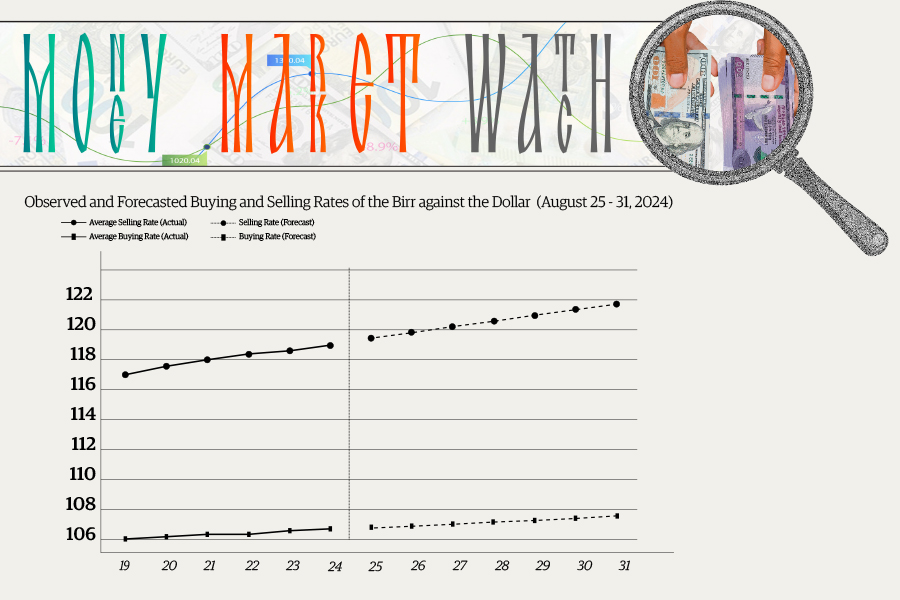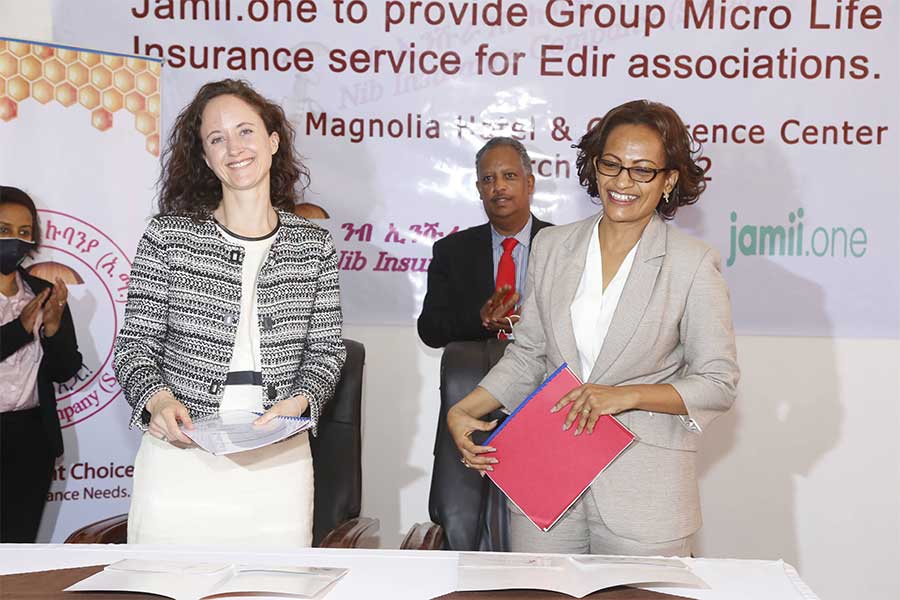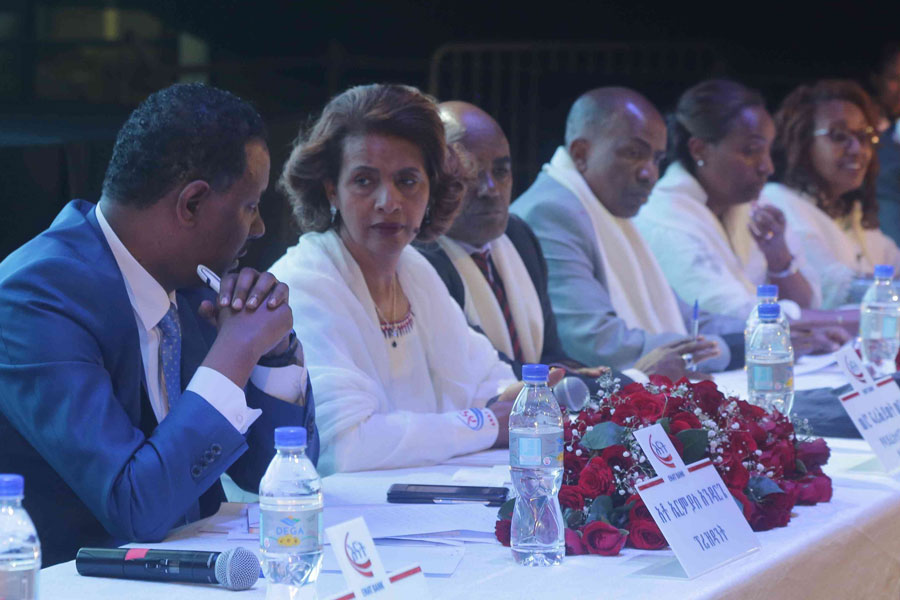
Money Market Watch | Aug 25,2024
The era of farmers using only two fertiliser varieties will be over soon as a legislative reform seeking to change a two-decade law will allow a domestic blending industry to emerge.
Blended fertilisers are a homogenous mix of single fertilisers often containing a combination of nitrogen, phosphates and potash. However, recommendations for applying chemical fertilisers had evolved dramatically over the past two decades, when Ethiopia first introduced laws governing the use of chemical fertilisers. A policy on its use was introduced in 1993, a law was enacted five years later.
“The existing legal framework is incompatible with the country’s development trajectory," said Tefera Solomon, director of soil fertility at the Ministry of Agriculture (MoA).
The Ministry has proposed a bill that requires fertiliser demand assessment and identification to conform to a soil fertility map in the making for a decade under the Ministry and the Agricultural Transformation Institute. It replaces a fertility map introduced during the Imperial era in 1970.
The agricultural sector has been characterised by low productivity, in no small part due to the deterioration of soil fertility, the imbalance in fertiliser usage and a lack of soil management practices. The introduction of a national soil fertility map brought to an end the more than half a century of blanket application of chemical fertilisers limited to only two types - urea and diammonium phosphate (DAP). The initial results of a national soil map survey conducted across 162 weredas in 2015 revealed the soil required nutrients other than nitrogen and phosphorous.
The federal government and cooperative unions initiated the construction of four blending factories to meet demand. The plants, which will have an aggregate production capacity of nearly 250,000tns a year, began blending and supplying fertilisers adapted to local soils the same year. However, all plants ceased operations in 2019, partly due to a lack of permissive legislation. Officials argue that since fertiliser blending activities are not included in the proclamation, it was difficult to support the plants through credit and direct capital injection.
“The amendment will pave the way for blending plants to receive the much-needed support,” said Tefera.
The Becho Woliso Blending Factory was erected at an investment cost of 31 million Br in Oromia Regional State. Administered by the Gibe Dedessa Farmers Cooperative Union, it has a workforce of 40 producing 3,000qtl of blended fertiliser a day. However, the factory has not been producing for the past three years due to the absence of blended ingredients provided by the Ministry.
Million Kifle, deputy general manager of the factory, remembers Ministry officials telling them to be patient as the federal government was negotiating with a Moroccan-based company to import the ingredients.
“We haven't had any help thus far,” said Million.
The federal government had reached an agreement in 2018 with OCP Group, a global leader in the phosphate industry, to build a 2.5 billion dollar fertiliser plant in Dire Dawa. Laying on 100hct of land, the plant was touted to have an annual production capacity of 2.6 million tonnes. The project never took off.
The construction of Yayu Fertiliser Company's plant in the Oromia Regional State has also been suspended for an indefinite period. Close to 450,000 farmers under Liban Union, comprising 120 cooperatives, were beneficiaries of the blending factory. The Union had been receiving 230,000qtl of blended fertiliser from the factory each year.
“The demand for blended fertiliser increased dramatically within a few years after its introduction,” said Desalegn Ayana, manager of Liban Union.
The amount of fertiliser used in smallholder farms has increased exponentially since the 1960s when annual usage was at 3,500tn. It grew to 140,000tn in the 1990s and 1.9 million tonnes last year. The Union has been distributing 255,000qtl of non-blended fertiliser to farmers annually.
Feyera Bekele, 52, is a farmer in Waliso Wereda of the Oromia Regional State, 120Km southwest of Addis Abeba. He has witnessed firsthand the rise in productivity when using blended fertiliser. Before the plants ceased operations, Feyera received up to two quintals of blended fertiliser each year, using it to harvest 25qtl of teff and 10qtl of maize on two hectares. Nearly half of the productivity was nosedived when he was forced to use non-blended fertiliser.
“It's affecting my family’s wellbeing,” said Feyera.
Blended fertiliser is more affordable, too, with Liban Union selling a quintal for 1,000 Br. It now sells a quintal of non-blended fertiliser for three times as much. To fill the gap created by the unavailability of blended fertiliser, the government has been importing NPS, a compound fertiliser containing nitrogen, phosphorous and sulfur. During the last Mehir harvest season, 1.92 million tonnes of chemical fertilisers such as urea and NPS were applied on 10.1 million hectares of cultivated land.
The first batch of the two million quintals of non-blended fertiliser acquired by the MoA for the next Mehir season arrived last week.
Lemma Wogi (PhD), assistant professor of soil science at Haromaya University, believes the government must support the plants as blended fertiliser is crucial to growing productivity.
“The right combination of nitrogen, phosphates and potash will give farmers the nutrition their soil needs," he said.
The expert observed that even though non-blended fertilisers such as urea and NPS have relatively similar phosphorous content, they are no match for the potential of blended fertilisers.
"They cannot substitute each other," he said.
Tefera disclosed the draft would be subject to a series of consultative meetings before being forwarded to the Council of Ministers.
“The sooner, the better,” said Lemma.
PUBLISHED ON
Feb 12,2022 [ VOL
22 , NO
1137]

Money Market Watch | Aug 25,2024

Commentaries | Apr 17,2020

Agenda | Sep 28,2024

Commentaries | May 20,2023

Radar | Jun 11,2024

Fortune News | Apr 19,2025

Fortune News | Mar 12,2022

Fortune News | May 08,2021

Commentaries | Sep 14,2019

Fortune News | Apr 10,2023

Dec 22 , 2024 . By TIZITA SHEWAFERAW
Charged with transforming colossal state-owned enterprises into modern and competitiv...

Aug 18 , 2024 . By AKSAH ITALO
Although predictable Yonas Zerihun's job in the ride-hailing service is not immune to...

Jul 28 , 2024 . By TIZITA SHEWAFERAW
Unhabitual, perhaps too many, Samuel Gebreyohannes, 38, used to occasionally enjoy a couple of beers at breakfast. However, he recently swit...

Jul 13 , 2024 . By AKSAH ITALO
Investors who rely on tractors, trucks, and field vehicles for commuting, transporting commodities, and f...

Jun 28 , 2025
Meseret Damtie, the assertive auditor general, has never been shy about naming names...

Jun 21 , 2025
A well-worn adage says, “Budget is not destiny, but it is direction.” Examining t...

Jun 14 , 2025
Yet again, the Horn of Africa is bracing for trouble. A region already frayed by wars...

Jun 7 , 2025
Few promises shine brighter in Addis Abeba than the pledge of a roof for every family...